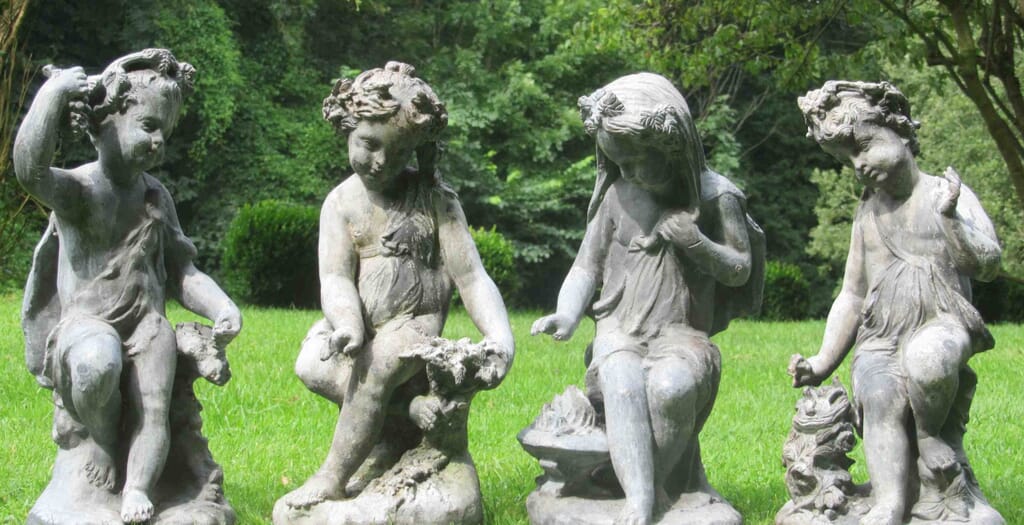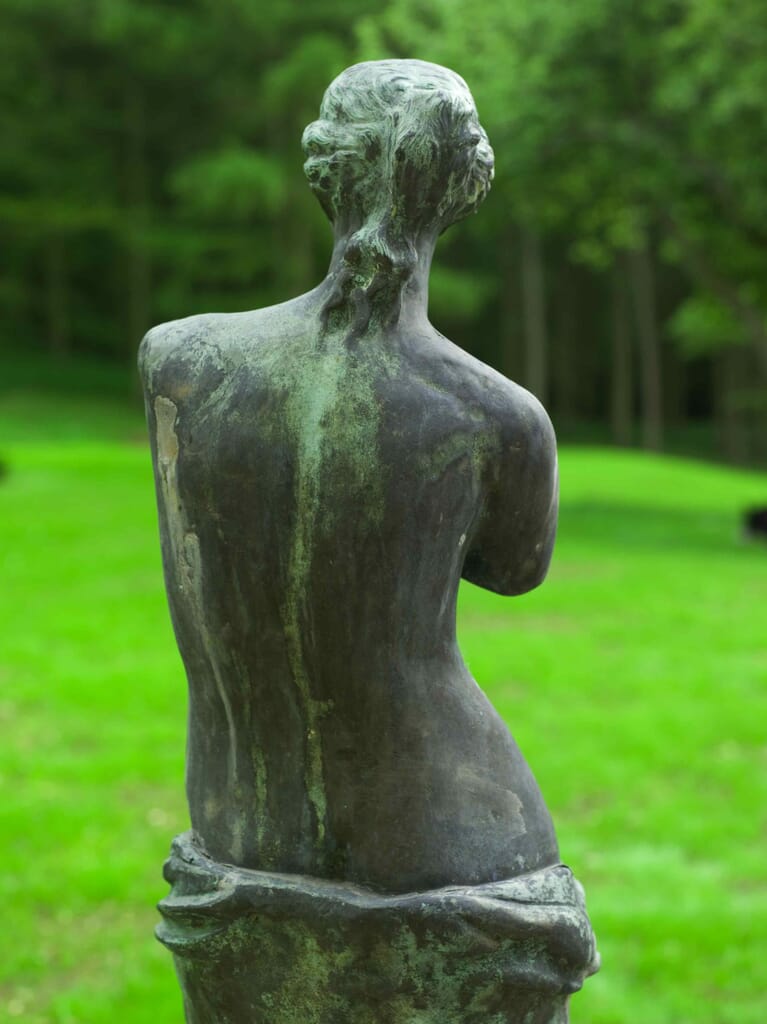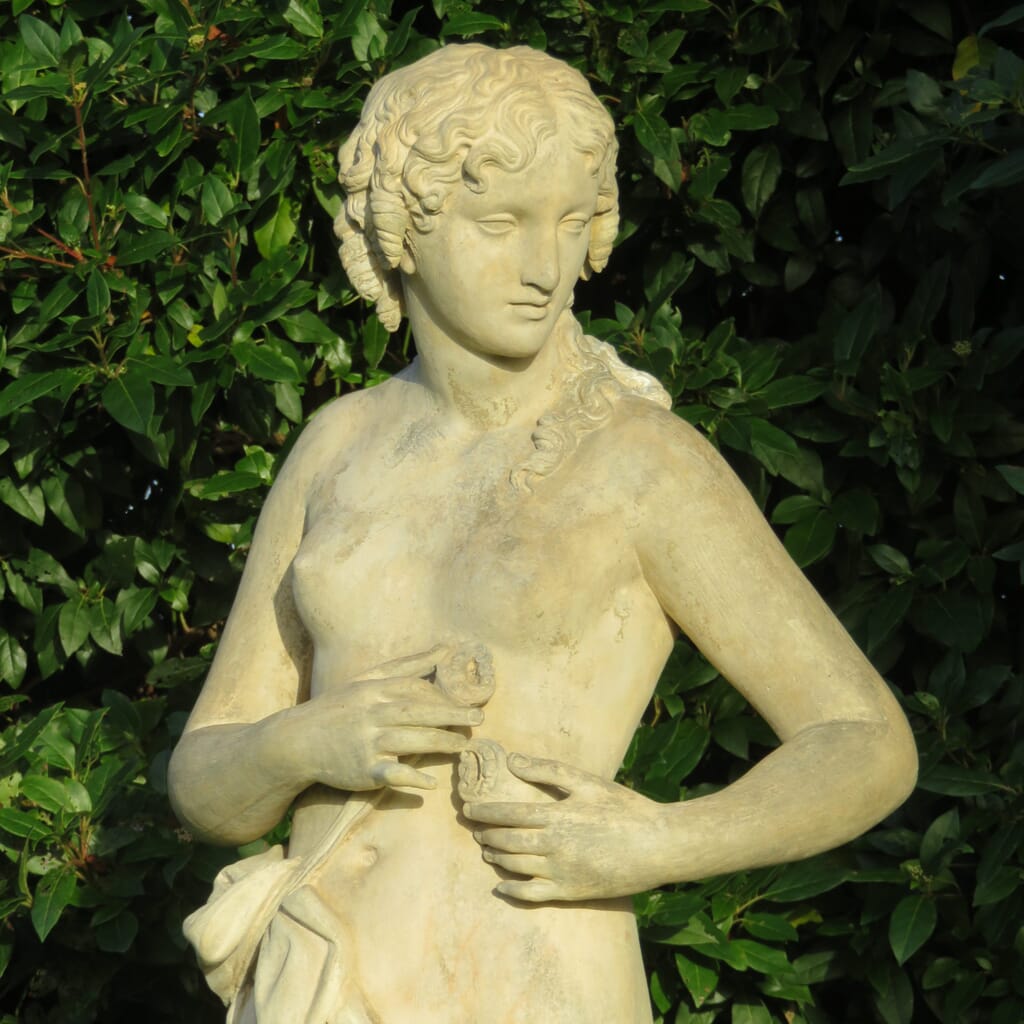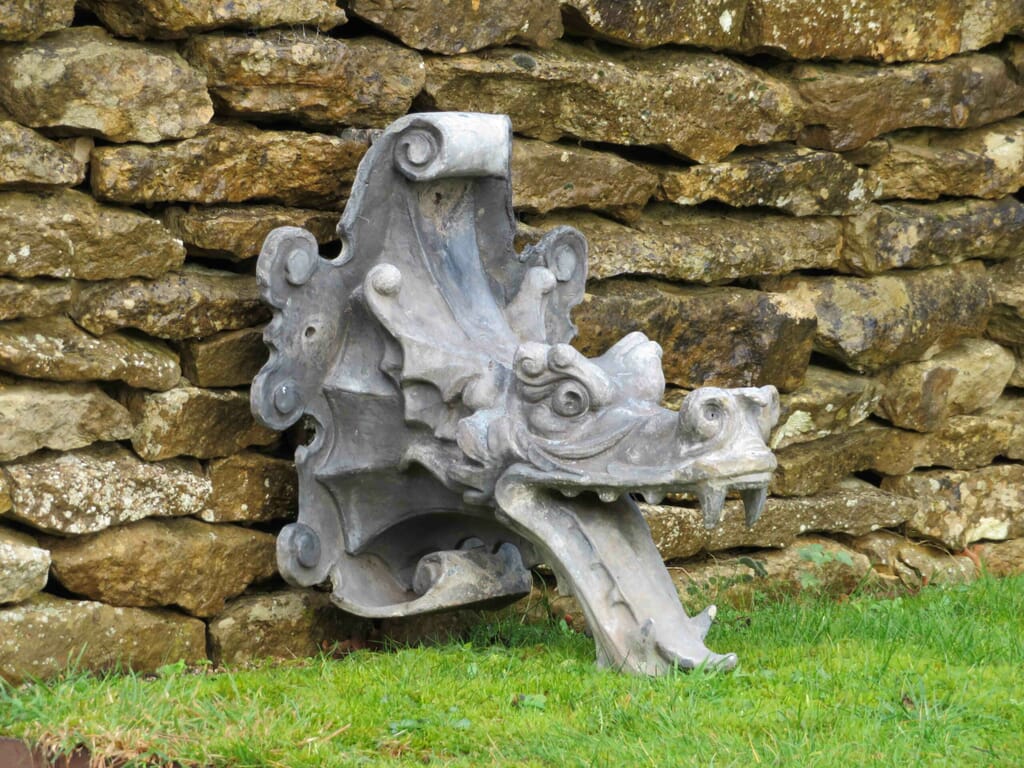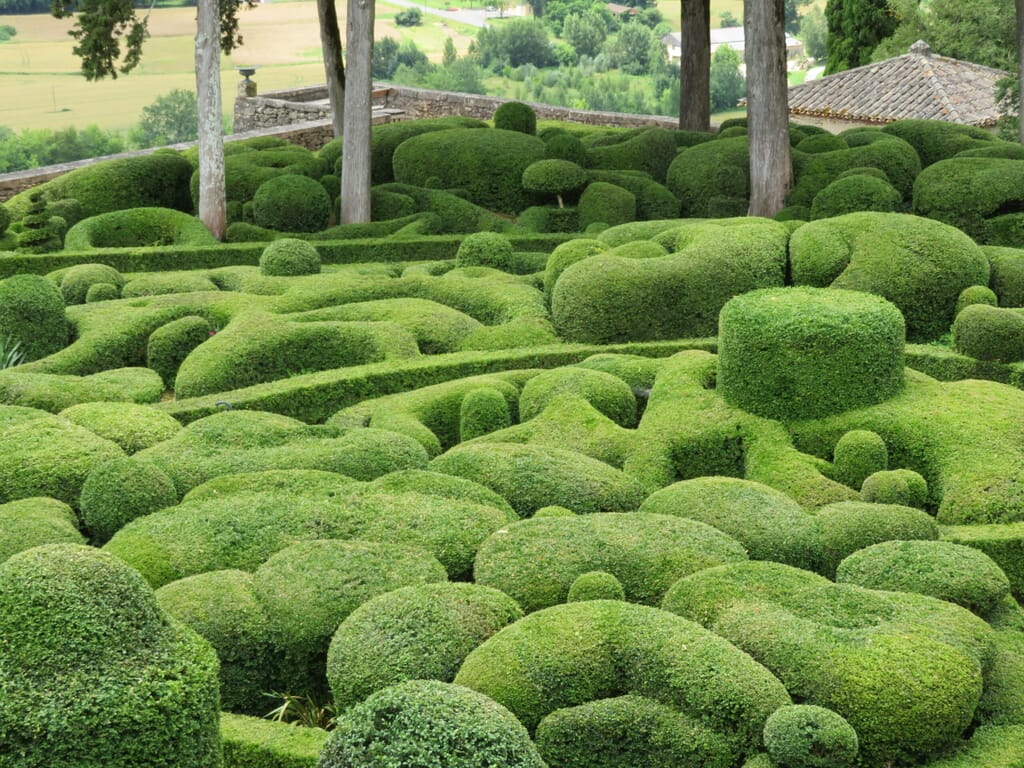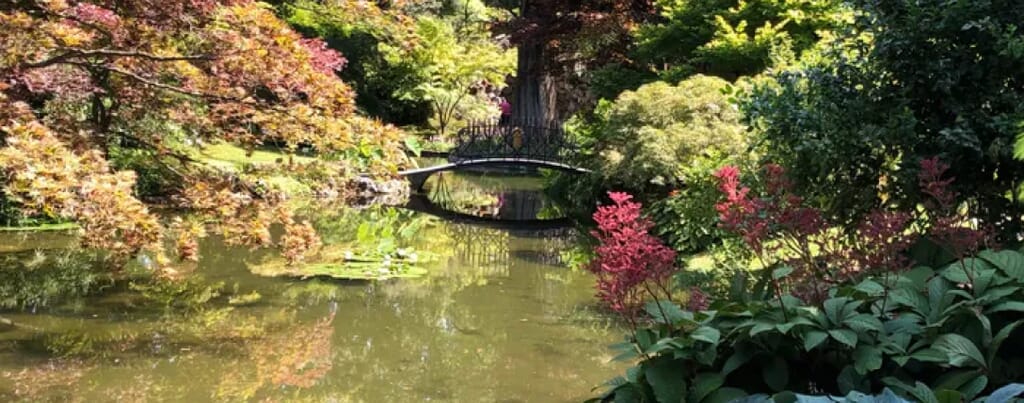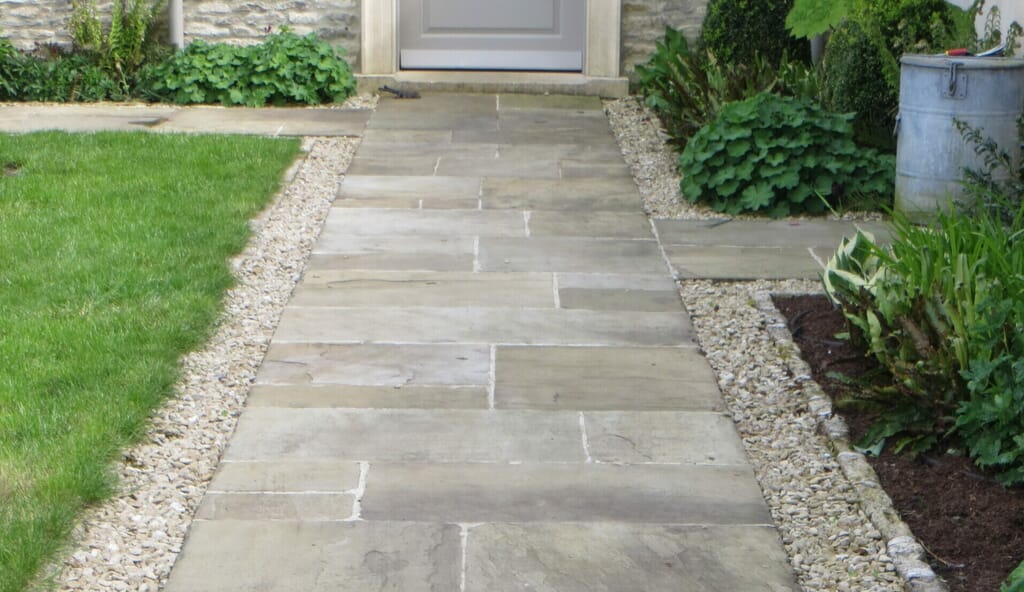Classical garden statuary can form the centrepiece of a garden vista, or a surprise element in an arbour. Lichen Garden Antiques sources and sells highly collectible garden statues from around the world, mostly from private estates. These are just some of the most famous designers and manufacturers of antique garden statues.
Coade Stone
A pioneer of the late 18th century, Eleanor Coade devised a process for the manufacturer of artificial stone which replicated fine-grained natural stone with superb appearance and durability.
Her manufacturing process managed to produce statues and pieces of such precision that they were renowned amongst such leading architects of the day including Robert Adam, James Nash, James Wyatt and Sir John Soane.
Her wares were widely used in some of the most important country house of the age and her famous catalogue A Descriptive Catalogue of Coade’s Artificial Stone Manufactory listed over 700 designs.
John Cheere
Trained by the Dutch sculptor John Nost in the second half of the 17th century, John Cheere is probably best known for his graceful lead statues than adorned the houses of the aristocracy in the 17th and 18th centuries.
He was well placed to take advantage of the fashion for French style gardens that dominated Europe in the late 17th and early 18th centuries, creating statues in lead which was cheaper to produce than marble and also more durable in the harshness of the English climate.
This pair of lead statues, after John Cheere, were first commissioned for the Palace of Quelez in Portugal. Similar models may be found in the Temperate House at Kew Gardens. Cheere and Van Nost would have made small scale lead models of their designs to show prospective clients.
The Bromsgrove Guild
With its full title of the Bromsgrove Guild of Applied Arts, this collection of artists and designers was established in 1894 by Walter Gilbert in Bromsgrove, in the English county of Worcestershire.
Associated with the Arts and Crafts movement, the artisans produced a wide variety of decorative ironwork, statues and vases in lead and occasionally in artificial stone not dissimilar to Coade stone.
The Guild is renowned for the fineness of its pieces which included stained glass windows and the entrance gates at Buckingham Palace. The company only closed its doors in 1966.
Austin and Seeley
In the early 19th century, inspired by the exceptional works of Eleanor Coade, Felix Austin purchased the moulds of a company that had gone out of business and set about manufacturing his own artificial stone pieces. Rather than Coade stone which had a ceramic base, Austin’s stone combined pieces of Portland and other stone, sand and marble which were then cast in moulds. In 1840, after 12 years, his went into partnership with John Seeley who had trained at the Royal Academy and who had also produced an artificial limestone.
Like Coade stone Austin and Seeley’s stone was extremely durable and was highly sought after by leading architects of the day and they produced exceptional garden ornaments including fountain, garden urns and statues.
